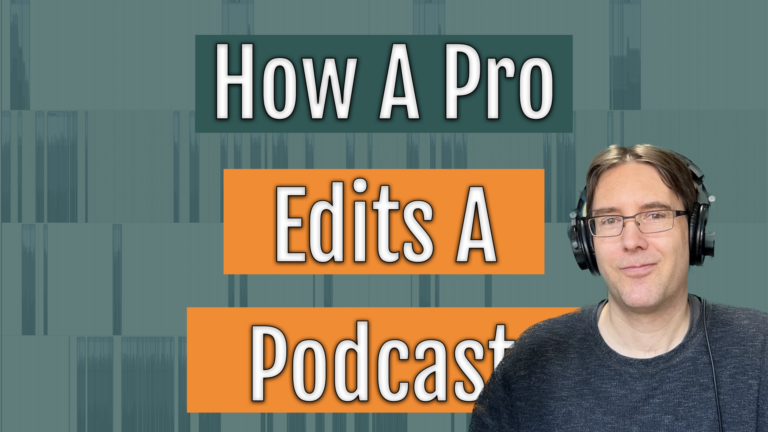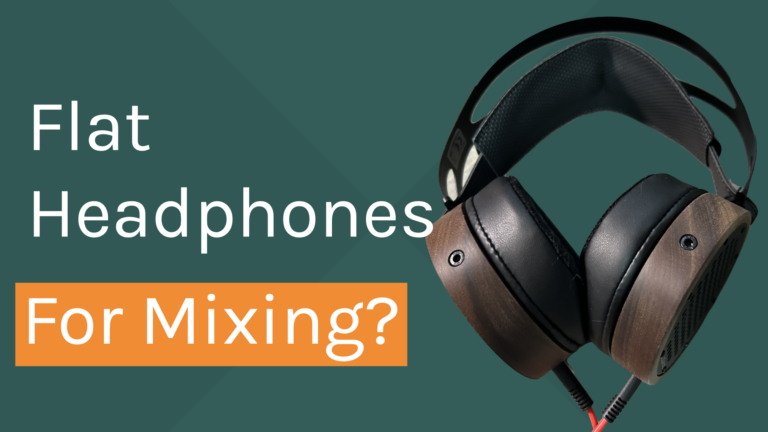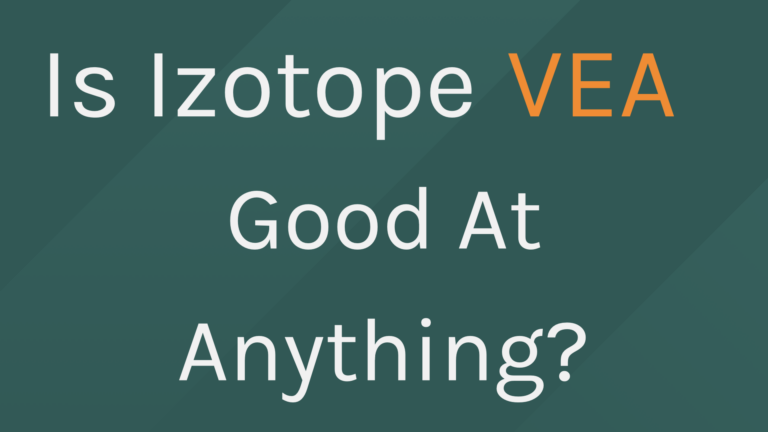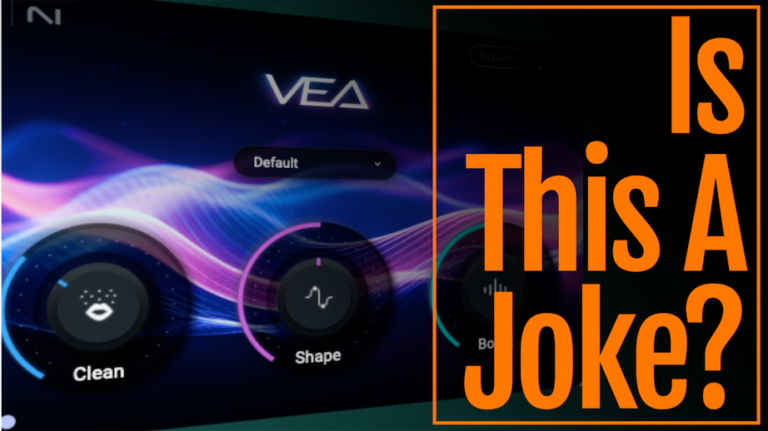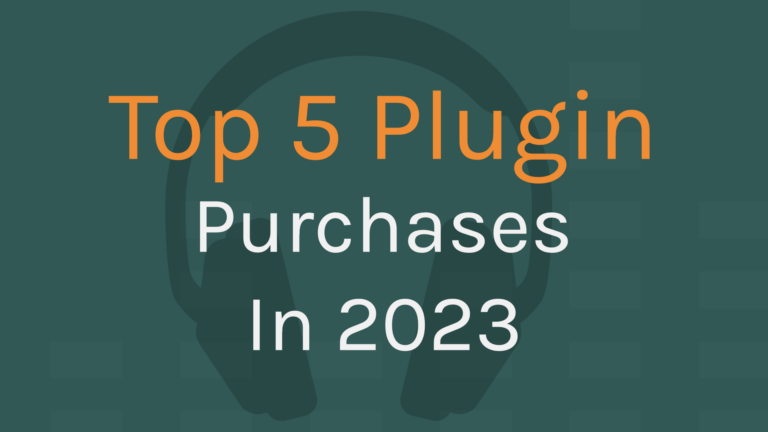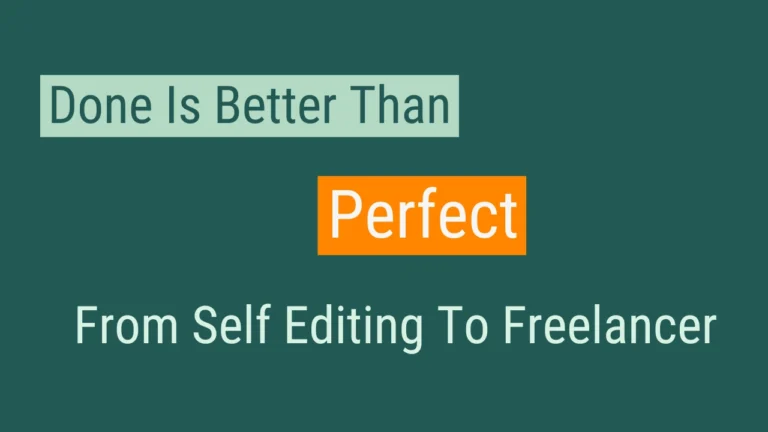DAWs and Audio Editors
Today I want to talk about choosing the right tools for editing podcasts. Whether you’re editing your own show or editing for others, choosing the right tools will save you time and frustration. Let’s start with one of the biggest questions I see. “What is the best DAW?” This is a bit of a complicated question because DAWs aren’t our only option for editing these days. DAWs are generally looked at as programs that allow one to produce music. So we’re thinking of programs like Pro Tools, Logic and Reaper.
Next, we have audio editors like Hindenburg, Izotope RX, Audacity, and Audition. And more recently, we’ve started seeing cloud-based audio editors and AI programs pop up. Think Descript.
Which DAW Is best for editing Podcasts?
Which program is best for you is simple. It’s the one that allows you to work effectively and efficiently without feeling like you’re fighting it. I use Logic for music production, but when it came to editing podcasts, I felt like I was fighting it. So I tried every program I could get my hands on, and I ultimately settled in with Hindenburg. It offered the workflow that worked best for me.
On the other end of the spectrum was Audacity, which seemed just overly obtuse and trying to do anything I wanted. I feel that with Audacity, you get what you pay for. It will get the job done, but it’s not the best workflow or experience to get it done. And then there was Audition. There’s just something about the way Adobe does things where everything seems backward to me and makes me want to throw the computer out a window.
Coming from a music background, I naturally navigate towards DAWs, but if you are new to audio and are only editing podcasts, you might find tools like Descript are better suited for you. They have everything you need built in, and it’s not uncommon for some editors to use both. They might use Descript and Hindenburg or Descript and Audacity, especially if you’re working on narratives. Using a variety of tools can make that storytelling a lot easier. It’s all about finding what works for you and your clients.
Plugins Vs Cloud-based Apps For editing podcasts
So now, let’s look at plugins and other tools we use when working with audio. Plugins offer one advantage over using cloud-based apps. Okay, two advantages. One is that they work non-destructively in real time. No waiting for a file to upload, process, and render. You can hear what the audio will sound like immediately, and you can adjust as needed. The other advantage is they don’t usually come with subscription costs.
Which plugins should you use? Plugin choice is another personal thing. After 20 years of working with audio, I think it’s better to have a handful of quality tools you know inside and out than to have dozens of plugins you don’t use often unless you are editing for others. Even then, I don’t recommend just stockpiling plugins.
The essential plugin types for podcast editing:
- Noise reduction
- Reverb reduction.
- EQ
- De-esser
- Compressor
- Limiter
- Loudness meter
3 things i look for in a plugin
Many DAWs and editors will include some, or all of these. Some will be bare-bones, but they do get the job done. The three things I look for in a plugin are:
- Does it allow me to dial it in quickly?
- Does it sound better than my other options?
- Does it save me time?
My plugin journey
I found Fabfilter’s plugins to offer the best UI/UX for dialing things in and hearing and seeing what the plugin is doing.
They were my go-to plugins for bread and butter stuff like EQ, compression, de-essing, and limiting for years. The Pro-Q 3 is still my go-to EQ for corrective EQ work, and I haven’t found an easier to dial in de-esser than their Pro-DS.
Plugins to save me time on clean up and mixing duties
This year one of my goals was to distinguish the differences between my standard and premium services. This started with assessing where I was spending my time and where I might be able to streamline things.
Smart Plugins to Handle the mixing Duties?
The first thing I did was start testing out Sonible’s smart:Plugins, and I found the clients didn’t comment at all about the difference when I started using those. So that told me I was good to move forward with those and save time while still producing quality audio. I’m using the Smart plugins because they provide a good starting point quickly. I went from averaging around 15 minutes per guest track to around 5. If I’m handling 3 guest tracks a week, this saves me about 26 hours a year.
Better noise and reverb plugins for cleaning up podcast recordings
Another place I was spending a lot of my time with each track was with cleanup tasks. I was in Izotope RX’s standalone editor, and it wasn’t uncommon for me to spend 30 minutes per episode cleaning up tracks in RX.
There wasn’t much I could do here to save time until this summer. It seemed like within a matter of weeks, we had a few next-level noise and reverb reduction plugins released. We saw SuperTone Clear, which had been out for a little bit in beta, but I didn’t become aware of it till this summer. Accentize released dxRevive and dxRevive Pro, and Cedar Audio released VoicEx.
These have allowed me to completely skip the RX editor for my standard services and even for most of my premium clients. SuperTone Clear, has been my number one choice for both noise and reverb reduction in the time that I’ve been using it.
I also added Accentize dxRevive to the toolkit because, even though I don’t think it’s the best sounding option, it is fantastic when you have noisy, harsh sounding audio with a lot of reverb that you don’t want to spend a lot of time trying to clean up with EQ. It’s a much better alternative than using Adobe’s Enhance Voice, which has this tendency to change people’s voices.
The Luxury purchase
I was in a fortunate situation of having to spend some money at the end of the year, so I grabbed Cedar’s VoicEx, and I know many podcast editors will scoff at the price, but let’s say it saves me an hour a week in clean up tasks. That’s 52 hours a year on the podcast editing side of things. It’ll probably save me another 25 hours or so on video production work. I know this isn’t feasible for most of us, and it’s a luxury, but SuperTone Clear will provide, I don’t know, 85% of the same result for $100. Either one provides a solid return on the investment.
Like I’ve said before, noise and reverb reduction tools are our moneymakers, so I’m okay with having a few options at my disposal.
Choose Your Plugins Wisely
My advice is to choose your plugins wisely. Don’t get sucked into the Waves marketing funnel and buy 50 plugins because they’re on sale, or they’re buy three get one free, or whatever their day whatever their deal of the day is. The vast majority of Waves plugins they’re extremely old. They don’t sound as good as newer plugins.
Until recently, I’d been recommending Plugin Alliance as a solid alternative to Waves. They have great sales, and I feel their plugins sound better. Their Kirchhoff EQ is my choice for a more affordable alternative to FabFilter’s Pro-Q 3.
Earlier this year, Universal Audio jumped into the native plugin game with very competitive pricing, and that’s now my number one recommendation for Waves alternatives. I’m a longtime user of their interfaces and a big fan of their plugins.
Don’t buy indiscriminately. Buy with purpose.
Circling back to choosing your tools wisely, my advice is just not to buy indiscriminately. Buy with purpose. Don’t buy a new plugin because it sounds cool, or you hope it will improve your audio. Buy it because it solves a problem for you. Demo the plugin and set aside enough time to really be able to compare it to what you already have. That way, you’re not buying something that’s just going to sit and collect digital dust.
Disclosure: Some of the links in this post are “affiliate links.” This means if you click on the link and purchase the item, I will receive an affiliate commission.

